Performance Preparation #0002 — Guitars and Kit I use live.
My current live kit setup
A quick note before we get started: You can read this post on my substack website (instead of in email) by clicking here. On my website you can also access all my other posts via the archive.
This is the second article in this ‘Performance Preparation’ series.
Part 1 can be found here, in the Guitarist/Songwriter Resources section.
Getting ready…
I’m currently preparing to do some gigs later in 2024, a mixture of my original material and my favourite covers, songs that really mean something to me.
In total, I’m preparing about twenty-four songs — twelve covers and twelve originals, which is somewhere between seventy-five to ninety minutes. This means I have enough material to easily do a show with two thirty-minute sets, with songs in reserve. For the kind of venues I’ll be playing (fifty to one hundred and fifty capacity, quite often with people seated at tables, drinking and eating) that’s more than enough.
I’m not sure exactly where and when I’ll be playing live, so my ground zero starting point is that I can play and sing everything convincingly on my own with just an acoustic, as for sure at least on some of the live dates I will be performing my sets alone, whilst on some I’ll be with other musicians.
Guitars and kit I use live
In this article, I’ll go through:
The main kit I personally use live.
The additional kit I use at home to prepare for live/rehearse with.
What my ultimate dream setup would be and why…
Here’s a quick overview/table of contents of what’s in this article:
My current live kit setup summary
My Guitars
You need a Luthier!
Bits on my guitars
Guitar stuff in my gig bag
Guitar amp setup
Stands, seats etc
Vocal setup
Basic rehearsal setup
Basic filming setup
Spares Kit
Guitar cases
My Ultimate Dream Setup Wishlist…
The Song’s the Thing! Gear… My Official Thomann Affiliate Page
My current live kit setup summary
In brief, more or less, under ideal circumstances, I plan to have three guitars (an electric, a steel-string electro-acoustic, and a nylon-string electro-acoustic), one combo amp (maybe with a separate cab speaker), and a minimal foot-pedal system (with a looper). I’ll also have an old iPhone which I use to host a guitar amp modelling app for my amp, and an old iPad, on which I have all my lyrics, chords and setlists (I have it just in case, I don’t refer to it onstage, it’s more a security blanket).1
My Guitars
My three main guitars are:
Fender Stratocaster Plus. Electric.
Model #: 010-7500-832, from September 1993 (I bought it in Brighton, new from my mate Gary Marshall’s2 then new shop, GAC). “Made in U.S.A.” Tobacco-sunburst finish. Maple skunk-stripe inlay C profile neck. Rosewood fretboard with 22 medium-jumbo frets. Three Lace Sensor Gold single-coil pickups, with a Fender Treble Bass Expander (TBX) pot for the middle and bridge pickups. Hipshot Tremsetter. Fender LSR Roller nut. Schaller locking tuners. I think the body material is alder, however I’ve been told it could also be poplar.
As far as I can tell this Strat configuration is no longer offered by Fender. I’d say the current off-the-shelf equivalent would be something like this or this (although neither have a roller nut, which I think can make a big difference). I’ve added a few examples to my Thomann affilate page.
One thing I would add here is that I recently added a Squier 40th Annivesrary Telecaster Vintage Edition to my guitar collection. They are now quite hard to find new, and currently out of stock direcly from Fender (in February 2024), who are now listing them retail at almost four-times more than mine cost! Honestly, I cannot really tell the difference between my Squier and a real vintage Fender Telecaster. Straight out of the box it was playable, and has only needed minor adjustments to the intonation/action. I’m impressed. So, it could be that a Squier 40th Anniversary Stratocaster is also a good option.
The strings I use for my Strat are D’Addario nickel wound regular light gauge electric (10/13/17/26/36/46).
Specifically: D’Addario EXL110
Yamaha APX-500 III. Electro-acoustic cutaway.
“Designed in Japan, manufactured in Indonesia.” Nato / Okume thinline body with a spruce top. Rosewood fretboard with 22 frets. Nato neck. Rosewood bridge. Under-saddle piezo pickup, with unbalanced 1/4 inch jack output. Built-in Three-band EQ and chromatic tuner.
I have various acoustic guitars, including a late-eighties forerunner of this APX-500 III, an APX-4A SPL (which I’ve had from new). I would say the APX-4A SPL is a much better guitar to play than the APX-500 III, and acoustically (so unamplified) it sounds better. However, it is now so beaten up and the electronics are now a bit unreliable. For this reason, I now use the APX-500 III, because it is very reliable (stays in tune, electronics are glitch-free, just plug in and play, etc.), and it sounds good (not great, or totally amazing, just good). I have acoustic guitars that sound much better, and are perhaps more enjoyable to play (for example, a Takamine Dreadnought, or a Baby Taylor), however, for these, I need external microphones. Grabbing the Yamaha APX-500 and just plugging it into an amp or directly into the PA is just so much less hassle.
The APX-500 III is now discontinued and (apparently) quite rare. The Yamaha APX range has been going since the late 1980s and continues to this day. I’d say the current equivalent is probably the APX-600 series. Something like this or this.
The strings I use for my APX are D’Addario 85/15 bronze extra light gauge acoustic (10/14/22/30/40/50).
Specifically: D’Addario EZ900
Epiphone C70CE. Cutaway Acoustic-Electric Classical Guitar.
Korean made. Nylon strung. Rosewood body with spruce top. Rosewood fretboard with 19 frets. Mahogany neck. Under-saddle piezo pickup, with balanced XLR and unbalanced 1/4 inch jack outputs. I use this guitar the least, maybe just optionally on two or three of the most mellow relaxed numbers in my set. So I don’t always take it with me. It’s very easy and fun to play, although its neck is much wider than my other guitars, so I have to make a quick mental adjustment when I pick it up.
The Epiphone C70CE is now discontinued, and there does not seem to be a current equavelent made by Epiphone. I’d say current off-the-shelf equivalents would be something like this or this.
The strings I use for my C70CE are D’Addario ‘Classic Nylon’ silver plated copper wound and clear nylon, tie end, normal tension (28/319/402/29/35/43)
Specifically: D’Addario EJ27N
You need a Luthier!
In the past, I have ‘set up’ my own guitars — meaning adjusting the intonation, string height, neck position, pickup height etc, and doing small repairs. Now — even though theoretically (and even practically) I know how to do all of this — I never even contemplate doing it myself! Time and time again experience has shown me that it’s better to get someone professional who really knows how to do all of this to do it for me — it saves so much time and frustration, and, honestly, in the long run, I think it’s cheaper.
However, finding a good luthier is not easy. A luthier is someone who has studied and knows how to make guitars — and has made some that can actually be played!
My go-to luthier here near Málaga is Antonio Yañez, here is his website. At some point I hope to post an article/interview with Antonio — he’s passionate about guitars and is a great player. He’s not so passionate about this, the Plek Machine! Hopefully, in our interview, he’ll explain exactly why.
If you want to attempt to adjust your own guitar/s, well, there is plenty of information online on how to go about this. This is a very good summary/starting point.
Bits on my guitars
D’Addario DARE dual shoulder guitar strap — equally distributes the weight of the guitar over both shoulders. Great for heavy guitars and players with back/neck conditions.
In the future I plan to do a separate post about ergonomics and comfort when playing the guitar. It’s actually a big topic and I feel an important one, especially if you are using a heavy guitar many hours a day, many days a week, and/or if you have some issues with your neck, shoulders and /or back. Having a suitable well adjusted guitar strap setup can make a huge comfort difference and facilitate playing for extended periods.
Schaller S-Locks security strap locks — I use these on my Fender Strat, and they are perfect, however, I don’t use them on the APX500 III because the strap stud on that guitar’s body is also the 1/4-inch jack output socket.
Silicone strap locks — I use these on my acoustic guitars. In the good old-bad-old days for this, we always used the orange Grolsch beer bottle rubber washers…
D'Addario Dual Lock guitar strap locks — I also use these ones…
Home-made acoustic counterweight (for neck-heavy guitar). Basically an old Velcro sealed pouch for a camera, with a smooth pebble inside it, attached to the righthand side of my guitar strap — it works perfectly, no more neck-dive when I go hands-free!
Guitar stuff in my gig bag
In the future I plan to do a separate post about using a plectrum.
Jim Dunlop 65 ultimate lemon oil (for the fretboard)
A good lint-free microfibre cloth for cleaning and polishing, something like the MusicNomad Microfiber Dusting & Polishing
Kyser Quick-Change Capo for 6-string acoustic guitars (I go for a gold or silver colour, so I can see it easily)
G7th Performance 3 ART capo for 6 strings (I use this for my Fender Strat)
Clip-on guitar tuner — there are literally hundreds of these to choose from online, from well-known to very obscure brands. Ideally, you need something that allows you to calibrate the Hz (most do, but check this). I’m old-school — I have mine calibrated to A440! I’d personally go for a rechargeable one — one less battery to change/carry a spare of, however one more thing to remember to charge! Here’s just one example.
Guitar sound hole covers, to stop feedback — I have one for the APX-500 III and another for the C70CE. Guitar sound holes can be different sizes and shapes, so you need to get the exact one that fits your guitar. Here’s just one example.
2 x 1/4inch mono jack-to-jack patch cables (long-ish — at least 1-metre length)
2 x XLR mic cables
Generally speaking I always use good quality cables with good quality connectors.
The topic of connectors is easy, just always go for Neutrik connectors (even their budget range seem to be very reliable).
The topic of cable is a bit more complex, even down to being sure you have the signal travelling in the correct direction for a particular cable. Here’s a great summary of the topic. Live, I’m still using Whirlwind jack-to-jack and patch cables that I bought more than thirty years ago! Remarkably they still work totally ok (although I’m not sure Whirlwind still make the same quality of cables today). Similar for my XLR mic cables, I’m using Neutrik cables (with Neutrik XLR connectors) which I bought more than thirty years ago, and they work fine. A also have a few Vovox cables — unbelievably good quality.
Guitar amp setup
I really like my current amp setup!
I wanted something small, with amp-modelling, FX, wireless, battery-powered, and versatile. I tried quite a few different amps and systems, and for sure there are better standalone amps, and better desktop/DAW amp modelling software packages, however for what I wanted at the time the Positive Grid Spark 40-Watt amp ticked all the boxes.
There are some things I don’t like about the Spark (which I’ll briefly outline presently), and I had to figure out some lateral-thinking hacks to get exactly what I wanted from this amp. However, Positive Grid has recently added an optional 140-watt Spark Cab for this amp which resolves many of my key issues, and also they have just launched a new amp, which is now on My Ultimate Dream Setup Wishlist (see the penultimate section of this article).
IMO the Spark 40 would be a perfect all-round amp if the following issues were resolved:
It’s not possible to directly access the guitar tuner from the app whilst viewing your current amp setting — you have to drill down to the tuner from a sub-menu or three. There should be a clear one-press tuner access/bypass option direct from the current amp setting screen.
There is no lineout (for a line to a PA mixer etc). The optional Spark Cab has a line out.
There is no integrated looper function in the app. There is a programmable footswitch, the Positive Grid Spark Control (which can control various settings within the app). So a simple integrated looper, controlled via said footswitch, would have been amazing!
There is no integrated option for a foot-operated Wah-Wah, and no live expression control of FX.
There is no integrated battery power option.
There is no integrated low-latency rechargeable wireless guitar connection.
As I’ve said, I hacked my way around all of these issues.
I bought an XTPower® XT-20000QC3-PA USB power bank, which allows me to use the amp without mains power
I used magnetic mounts to attach the power bank snuggly to the back of the amp.
I carry the mains power supply for the Spark 40 in my gig bag, just in case…
I also mounted my iPhone on top of the amp (see photo at the top of this section) using items like this and this.
To get around the lack of a lineout (the short version is that) I cannibalised an old AKG C420 cardioid condenser microphone and attached it to the Spark 40.
I could have purchased the Positive Grid 140-Watt Spark Cab, as this adds line-out capability to the Spark amp.
Or I could have adapted the amp and added a line-out socket. However, I would not recommend doing this unless you really know what you’re doing with a soldering iron!
Also, I could just mic the amp up at the venue, I actually personally prefer this. However, this involves:
Hoping that the venue/live sound guy has a suitable mic and mic-stand for mic-ing-up a guitar amp (quite often they don’t have either).
Carrying a spare mic and a small solid mic stand — yet another thing to remember to bring/keep track of…
In the end, I did some experimenting. I had this AKG C240 just lying around, it had not been used in years. I basically removed part of the adjustable headband and secured the mic to my amp using a bungee cable. The adjustable gooseneck allows me to easily adjust where the mic is aiming — at which part of the speaker array. It works brilliantly! It’s very compact. It fits perfectly on top of the amp, so there is no cumbersome mic stand in the way. I just give the sound guy his end of the XLR mic cable and make sure he knows I need phantom power. The results are great.
I added a Phenyx Pro PTG-12 UHF Wireless Guitar System. I really like this system. The super-low latency is truly unnoticeable. However, I’m not sure it is available anymore! I aim to get the new Positive Grid Spark Link, or perhaps this system.
BTW I added a homemade 1/4-inch mono guitar cable short extension (TS male to TS female, about 30cm long) to the wireless guitar transmitter. I have this so that this transmitter does not get destroyed when I put my acoustic guitar down. Without this extension attached to my APX5000 III the transmitter would be in the guitar body’s strap stud as it is also the guitar’s 1/4-inch jack output socket. With the extension, the transmitter is now safely attached to my guitar strap.
Finally, I added a Zoom G1X four.
This great super compact multi FX unit provides four lateral-thinking hacks to overcome the issues I had with my Spark 40:
It has a really usable built-in simple looper (and a rhythm unit).
It has several great built-in Wah-Wah FX, all controlled by its…
Onboard expression pedal, which I can also use to control, just for example, the overall volume of my setup.
It acts as a simple one-press (of the foot) bypass pedal/stage tuner, which is very easily viewable.
At the core of my live guitar setup is the Positive Grid Spark app — amps, fx, signal processing, tuner, metronome, practice tools and more…
The Spark app is available free online from
I host the Spark app on a dedicated old iPhone X, mounted on top of my Spark 40 — I don’t use my daily-use mobile.
There are various other apps on this iPhone, the main ones being
Songbook Pro — basically set lists, lyrics and chords. I tried a lot of lyric/chord/set-list management apps. I like tghis one the best.
Guitar Toolkit — chord and scale dictionary resource, tuner, metronome etc.
Ultimate Guitar — cover song lyrics and chords resource.
I describe in quite some detail why I use these apps and what for in part one of this performance preparation series.
Stands, seats etc
Stand for my Spark 40 — yet another homemade hack, consisting of:
and an old 4-unit flight case lid (with the speaker bracket attached using some nuts and bolts)
A solid sturdy music stand
I tend to mostly stand up when I play live. However, if I do sit down for a particular song I’ve learned the hard way that I need a seat that is comfortable, the right height, and with somewhere to place my feet. I found a folding bar stool in Ikea which is perfect for me. I also have a drum stool.
I know people who use purpose-made performance seats, which are fully adjustable and even come with built-in guitar stands. I think to get one. I’ve been looking at this one and also this.
For a couple of songs that I am working on it would be great to be able to quickly go from playing my Strat to playing my APX (so a quick change from electric to acoustic and back). In My Ultimate Dream Setup Wishlist (the penultimate section of this article) I explain my ideal way to achieve this. However, there’s more than one way to skin a cat, and another (much cheaper) option is a guitar performance stand that suspends one of your guitars, so you can just walk up to it and just play (without needing to pick it up or a wrestle with a strap). Something like this or this.
Vocal setup
I’ve witnessed/experienced every possible vocal mic f**k up on stage. Some are easy and quick to overcome. Some are very funny. Some are horrific. Some are disastrous and simply game-over.
Now I just don’t leave anything to fate. I take my own vocal mic stand and mic. Job done. It consists of:
Shure SM58 (I’ve had mine for more than thirty years!), mic clamp (usually comes with the mic), and windscreen
Solid stable easily adjustable boom arm mic-stand, just for example the Hercules Stands HCMS-533B. You may be thinking a mic-stand is just a mic-stand, they’re all the same… however, quite often in a venue the mic stands are cheap and not in good condition. Joints are loose, brackets won’t tighten, making easy accurate adjustment very difficult if not outright impossible. You don’t want to be thinking/worrying about/f**k*ng around with this (with bits of gaffer tape…)… so I have my own robust, reliable, stable, easily adjustable mic-stand
Short goose-neck — if you just want to make a slight mic angle or height adjustment on the fly, well this addition makes all the difference!
XLR mic-cable — I’d go for a shortish coloured one, so that your mic-able is attached to your mic-stand, easily visible, and all you have to do is connect it to a line to the PA.
Various cable holders.
Mic-stand boom-arm mounted pick holder — just in case.
iPad or your tablet of choice… I use a very old, very beaten-up iPad, more or less it only has Songbook Pro on it — basically my set lists, lyrics and chords. I also have a small Bluetooth QWERTY keyboard, just in case I need to make some last-minute amendments at the venue.
iPad bracket — I’ve had my The Joy Factory one for maybe ten years, expensive but very robust (and still going). Again I adapted my one, adding a short goose-neck.
I also have an iRig Blue Turn — a Bluetooth page turner, that can control certain features in Songbook Pro. It’s useful but not 100% necessary.
Basic rehearsal setup
Why do I suggest having some sort of set-up like this?
Well, sitting on your sofa, playing an acoustic (or electric) guitar and singing at home is a totally different experience to being on a stage, surrounded by stage monitors and loudspeakers. You need to experience what that is like and learn to work with it.
Behringer Xenyx X2442 mixer — this is a great basic mixer, with built-in fx, so you can experience what your vocal will sound like live with, for example, reverb. I have a simple footswitch to toggle the reverb FX on and off.
Gooseneck lamp for mixer
A set of powered speakers and/or a stage monitor, so you can hear what you sound like
A keyboard.
For rehearsing at home, if I just want to figure out a chord, or a melody line, or a note’s pitch, or do a vocal warm-up, well, I have an old obsolete master keyboard connected via USB to my old iPad which has Apple’s GarageBand on it, which I use for keyboard sounds (upright piano, electric piano etc). This is very convenient for rehearsing, although I would not use it live.
If I need a piano live (maybe for “Hey Jude” or “Let It Be”) then I’d use a basic stage piano with electric piano presets, perhaps this or this. For sure, you’d also need a basic sustain pedal.
X-stands — for the keyboard and for the mixer.
Basic filming setup
I aim to film a lot of my rehearsals, jam sessions and live performances, however, I notoriously often forget to press record! Simply put filming rehearsals etc is useful for noticing things that need improving, developing or adapting.
I have yet another old iPhone I use as a dedicated video camera. For it, I have an old Apogee MiC 4K. It’s great, however, it has now been superseded by something like this or this. Please note that you need to be sure it is compatible with your phone!
I also have some USB dynamic mics — the Shure MV7 and the Røde PodMic USB. I’ve tested these for field recording and they are not bad at all and have much more inbuilt functionality than my old Apogee. However, for my purposes my old iPhone and old mic work just fine.
I have a basic camera tripod, with a phone mount, a short gooseneck (yep, I like goosenecks), and a basic LED video light.
I also have a very basic iOS Bluetooth remote to turn the video camera on and off. I also got a mixed set of camera tripod adapters and converters, so that I can mount a mixture of audio and video equipment. You can easily find its stuff on, for example, Amazon.
Spares Kit
Before I go to play at a gig I always make sure all of my kit is in good shape and ready to be used. I try to minimise any need to do anything extra at a venue, especially changing strings or doing guitar maintenance or running around trying to buy new batteries. However, just in case I’ve overlooked something…
When I play live I always keep a guitar spares/tool kit in my car. I made mine, it’s an old laptop shoulder bag filled with exactly that — guitar spares and tools. You can buy various ready-made kits in all price ranges, sizes and qualities. Would I buy a ready-made one? I doubt it, however, here’s a link so you can see what I mean…
What’s in my home-made spares kit? List below…
2 x XLR mic cables
Anti-feedback sound hole cover for Yamaha APX500 III
Tobacco tin with various spares inside
Allen keys (suitable for my guitars)
Screwdrivers (suitable for my guitars)
Multitool — mine’s an old Gerber, with a broken knife blade…
Penknife
Clean small-ish paint brush
Pencil (use the graphite to lubricate the nut when changing strings)
Nail clippers
Fine emery paper
Super glue
Head torch
Various batteries (for electro-acoustic pre-amps, guitar tuners, foot controllers etc)
Rechargeable batteries (3 types: AA, AAA, PP3 9-volt block),
Battery charger
USB charger and various types of USB cables (for example, Lightning for iPhone)
DI box — most live sound guys have one, but you never know…
Guitar cases
I have a selection of hard cases and gig bags for different sizes/types of guitars. For my Strat I have the original fitted hard case. If I know I need to load more than one guitar into a car or van I ALWAYS use hard cases! If I’m just taking one guitar with me, and I’m carrying it myself, I then may just use a soft gig bag, however, all of mine are well padded.
I recently got a hybrid semi-hard case/gig bag from a brand called Gear4Music. It’s for a classical/large-ish acoustic (not a dreadnought). I’m impressed with it, it was not too expensive. Probably the other cases they make are also good.
My Ultimate Dream Setup Wishlist…
Imagine being able to arrive at a gig with just one guitar, one amp, and a small bag of bits and pieces. That’s always my aim — simplicity, not overly complicated, hardly any cables, easy and quick to set up, versatile with a great sound.
However, to get the range of sounds that I want ideally I need three guitars (electric, steel string acoustic, and nylon string acoustic) and two amps (one bluesy overdriven sounding for the electric, another clean sounding for the acoustics). Sometimes it would be great to be able to play the electric through both amps at the same time, to combine the overdriven and the clean sounds. For sure with lots of guitar swop-overs (involving unplugging and replugging guitars into different amps), I can juggle all of this, however, it’s a headache and one I try to avoid.
Also, when rehearsing (at home or elsewhere) I need a small PA set-up — so a mixer and at least one PA monitor — so that I can rehearse with a mic, with reverb on it, to hear my voice and the guitar through a monitor as I perform, to be able to recreate what it feels like to play live in a venue. It’s a crucial element of preparation.
But honestly? I hate having to deal with all this extra kit, clutter, and all the extra leads and settings. However, in order to prepare thoroughly there is no shortcut around this.
Literally a week or so ago (so late January 2024) Positive Grid launched a new range of ‘Live’ products.
The new Spark Live (combined with other new Positive Grid products) resolves more or less all my issues with the original Spark 40 (which, to be fair to Positive Grid, was only ever marketed as a practice amp). Additionally, the Spark Live has features that now make it my ultimate go-to live and rehearsal amp, it would theoretically mean that with a suitable hybrid guitar, I could just turn up to a gig with one guitar, one amp, and one small bag of bits-and-pieces. And it also means I can completely ditch my rehearsal PA set-up —my mixer and PA/foldback monitors would all just become more-or-less obsolete!
Here’s why…
Before I do here’s a preview summary list of My Ultimate Dream Setup Wishlist…
2 x TRS control pedal (for Wah-Wah and volume etc)
Straight off the bat, quite a few of my issues with the Spark 40 have been addressed in the new range of products from Positive Grid.
Has line outputs.
Has a standard tripod mount built into the amp.
Can run on an integrated battery pack — the Positive Grid Spark Battery.
Has a super-compatible low-latency rechargeable wireless guitar connection — the Positive Grid Spark Link.
Can connect via Bluetooth with a foot controller that has inputs for two TRS control pedals — the Positive Grid Spark Control X. This means that FX in the Spark app can be controlled, in particular, Wah-Wah and gain. The app has been updated to include expression pedal-controlled FX, like Wah-Wah (I’ll say more about the app update momentarily).
However, there is still no fast access to the tuner/bypass mode via the app amp screen, you still have to drill down several menus (which to me seems crazy).
And (as yet) there is still no integrated looper in the amp or in the app. Hence this pedal is now on my wish list — tc electronic Ditto + Looper. It is super simple, yet super sophisticated too.
Now here’s the thing — stated as briefly as possible, the Positive Grid Spark Live is a multi-channel amp and PA with FX. It’s basically two amps and a mixer in one box. So, theoretically, I would no longer need my rehearsal PA setup!
You can read a quite comprehensive Spark Live review here.
And here below is a demo from NAMM 2024.
My intention for the remainder of this section is to just briefly outline how I would use the Spark Live live and why.
To do that firstly I have to introduce you to the Taylor T5z Custom Koa. Taylor has just updated this guitar - so to be clear I am talking about the new version of the Custom Koa. I’ve played a T5z Pro, and without any hesitation, I can say it is my dream guitar. The T5z Custom Koa looks to be beyond a dream. More or less it’s a hybrid electric acoustic guitar.
The two videos below explain all of this far better and in far more detail than I could, but more or less I can get as near as damn-it the same sound I get from my Fender Strat, AND a better acoustic sound than I get from my Yamaha APX, AND a very similar sound to a nylon-strung guitar (and not half-bad sounding too), all from one guitar, with almost just the flick of a switch. And all from a guitar which is an absolute joy to play, and that has an unbelievable amount of tone options on top of what I already outlined…
This brings me to the Positive Grid Spark Live.
More or less the Spark Live is two amps (and a mixer) in one box.
The main amp (let’s call it Channel 1) has dedicated amp modelling for electric and acoustic guitars.
The second amp (let’s call it Channel 2) has dedicated amp modelling for acoustic guitar, bass guitar and vocals.
There are also stereo line inputs (for example, for a stage piano).
The output levels of both channels 1 and 2, and the stereo line inputs can all be independently controlled via an inbuilt onboard mixer.
So, theoretically, you can have two guitars (an electric and an acoustic), a vocal mic, and a stage piano all running at the same time, all independently controllable level-wise, through the same amp. For rehearsing, that’s perfect. I don’t think I would ever use the Spark Live live in this way! However, for rehearsing, as I say, it’s totally perfect.
And again, like I already said, theoretically, that means I would no longer need my rehearsal PA setup — it becomes obsolete!
Here below is a vocal demo of the Spark Live, including using it as a guitar amp and a vocal PA at the same time.
Now, if I add an ABY switch (like the Fender ABY), I can theoretically just use one guitar (specifically the Taylor T5z Custom Koa or the T5z Pro), and bi-amp — channel 1 as electric and channel 2 as acoustic. The ABY switch would allow me to play through just channel 1 or just channel 2 or both at the same time. The T5z allows me to switch between electric-sounding and acoustic-sounding guitar settings.
Last, but not least, if I now add in simple wireless in-ear monitors, I can ask the sound guy at a venue to totally turn off all stage monitoring for me, and just get a custom feed from him to my monitoring transmitter. I can then control the level. For me, this is a really important consideration. I don’t want to, or need to, hear things super loud! My hearing has already taken quite a battering from years in recording studios and at events. Low-level in-ear monitor is the way forward!
So, that’s it, that's why the following items are on my wishlist. It would mean, more or less, I just turn up to a gig with one guitar, one amp, and a bag full of pedals!
2 x TRS control pedal (for Wah-Wah and volume etc)
My Official Thomann Affiliate Page
The Song’s the Thing! Gear…
Here’s the direct link: https://thmn.to/thocf/kkykt7g0wb
Please note that this link above should default to your region, in your local currency, and in your local language.
However, if for some reason it does not, here below are a few geo-specific links (I’ll add more in due course):
UK in £: https://redir.love/e1FDqKCI
EU in English in €: https://redir.love/bwMCpHXj
Spain in €: https://redir.love/v7NBqTJm
Germany in €: https://redir.love/Hw7jW1hv
Australia in AUD$: https://redir.love/iBxWXfFB
Canada in CAD$: https://redir.love/1bIsv2I2
USA in USD$: https://redir.love/HZ3DHIk7
For the time being, I have decided to only use Thomann affiliate links. In the future I may setup with Amazon too. I’ve checked and almost everything I’ve linked to in this post is available on Amazon, at more or less the same price, with similar availabilty and shipping costs. So, frankly, there does not seem to be any need to setup with two outlets. Thomann is EU based, and ships worldwide, so hopefully there should not be any issues, just for example, for people in the US or Canada.
What kit do you use live?
What tips do you have?
I’m genuinely interested.
Please note: I have another infotainment channel on Substack, called Unleashed & Unlimited, where I post podcasts, articles and content unrelated to music.🖋🎥🎙
From time to time in articles (like this one) I may include affiliate links (for example to Thomann or perhaps Amazon) to specific equipment I use or to a manufacturer’s/reseller’s online shop. To be clear, I’m not sponsored in any way by anyone or any company, so any recommendations or comments I make about equipment and/or software I use, or have tried out, are totally impartial, just my opinion based upon my personal experience. Also, personally, generally speaking, I would be very cautious about buying a guitar online. Normally I’d always want to have any prospective guitar purchase physically in my hands before I made any decision or parted with any money. Guitars vary so much, and buying a reputable well-known make is no real guarantee of a getting good playable guitar. So, if you buy a guitar online, make 100% sure you have the option/right to return the guitar with a full refund if on receiving it is defective or not as described.
Gary is quite a character. He started his first guitar shop in about 1991 or 92 in a small single lockup unit in a central Brighton shopping arcade (where I met him). For years and years, he’d spent almost every single spare penny on guitars and equipment from a local Brighton guitar shop. He was well-known in Brighton. That year (91 or 92) he wanted to buy something in particular from said local guitar shop (I forget what it was, but some amp or guitar that he needed for his band). He didn’t have the asking price, he was slightly short of cash. Even though he was a regular reliable customer, they would not hold the item for him, give him some credit over a month or two, or reduce the price slightly. This had such an impact on Gary that he gathered every penny he could, bought a whole load of second-hand guitar gear and started his own shop — which is now one of the biggest and most successful guitar sales businesses in the UK! He sold me my Fender Strat Plus at dealer price, he made no profit. A good mate. Gary and his family were in the middle of and survived the 2004 Thailand tsunami.


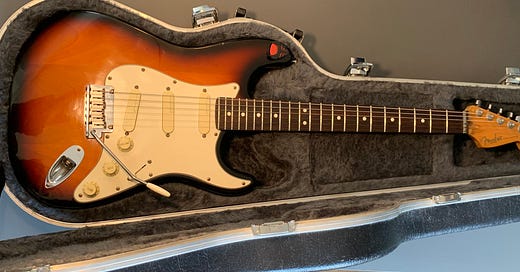




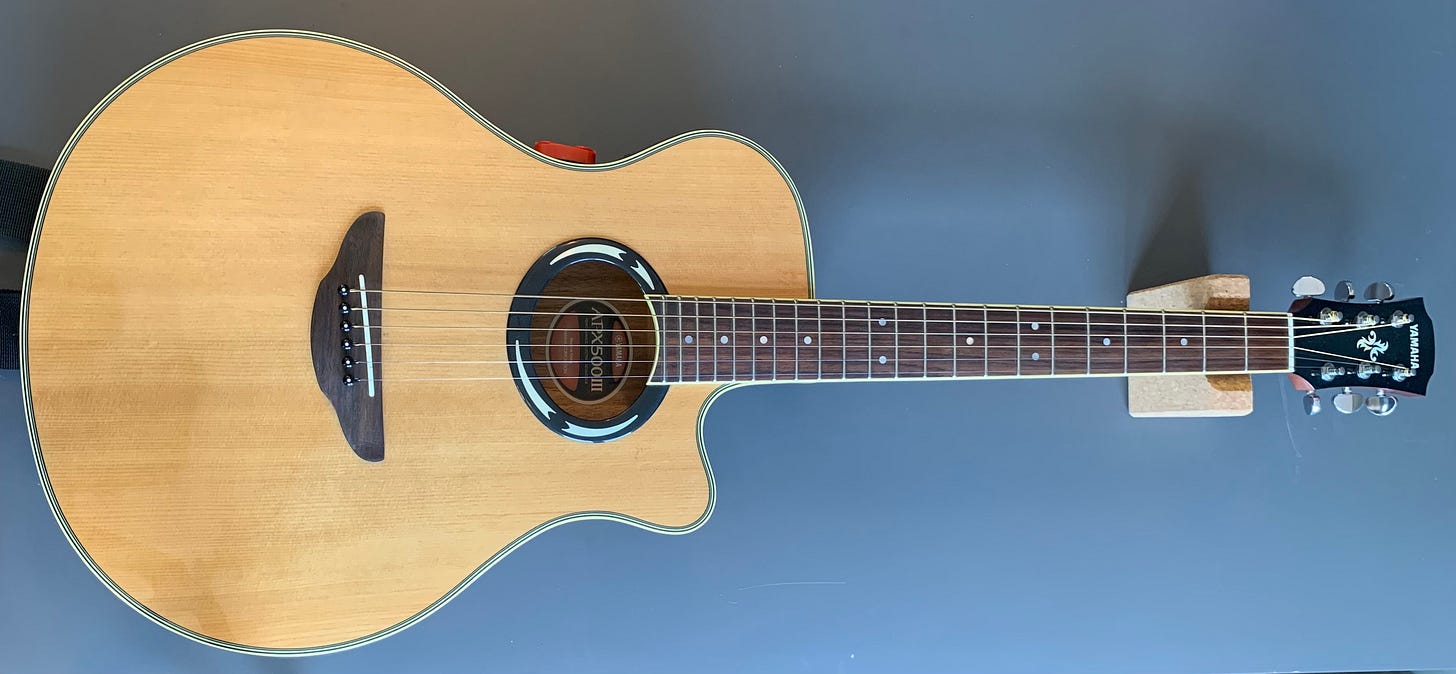
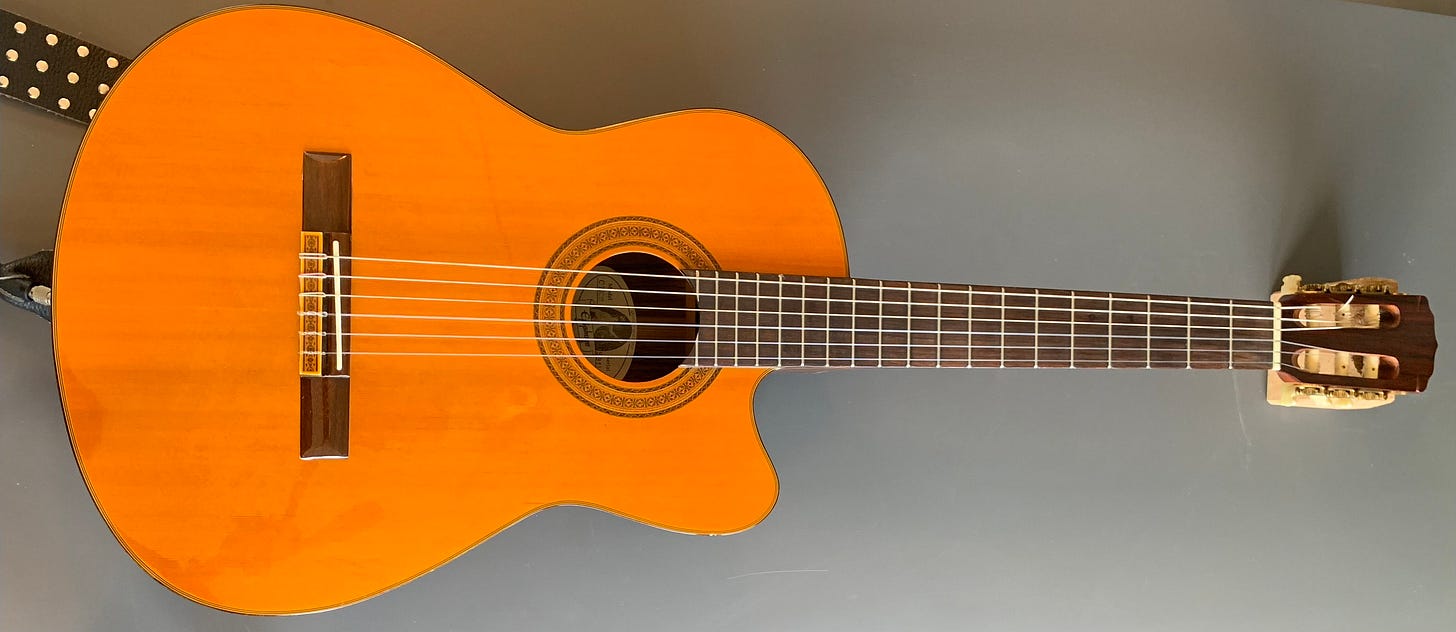
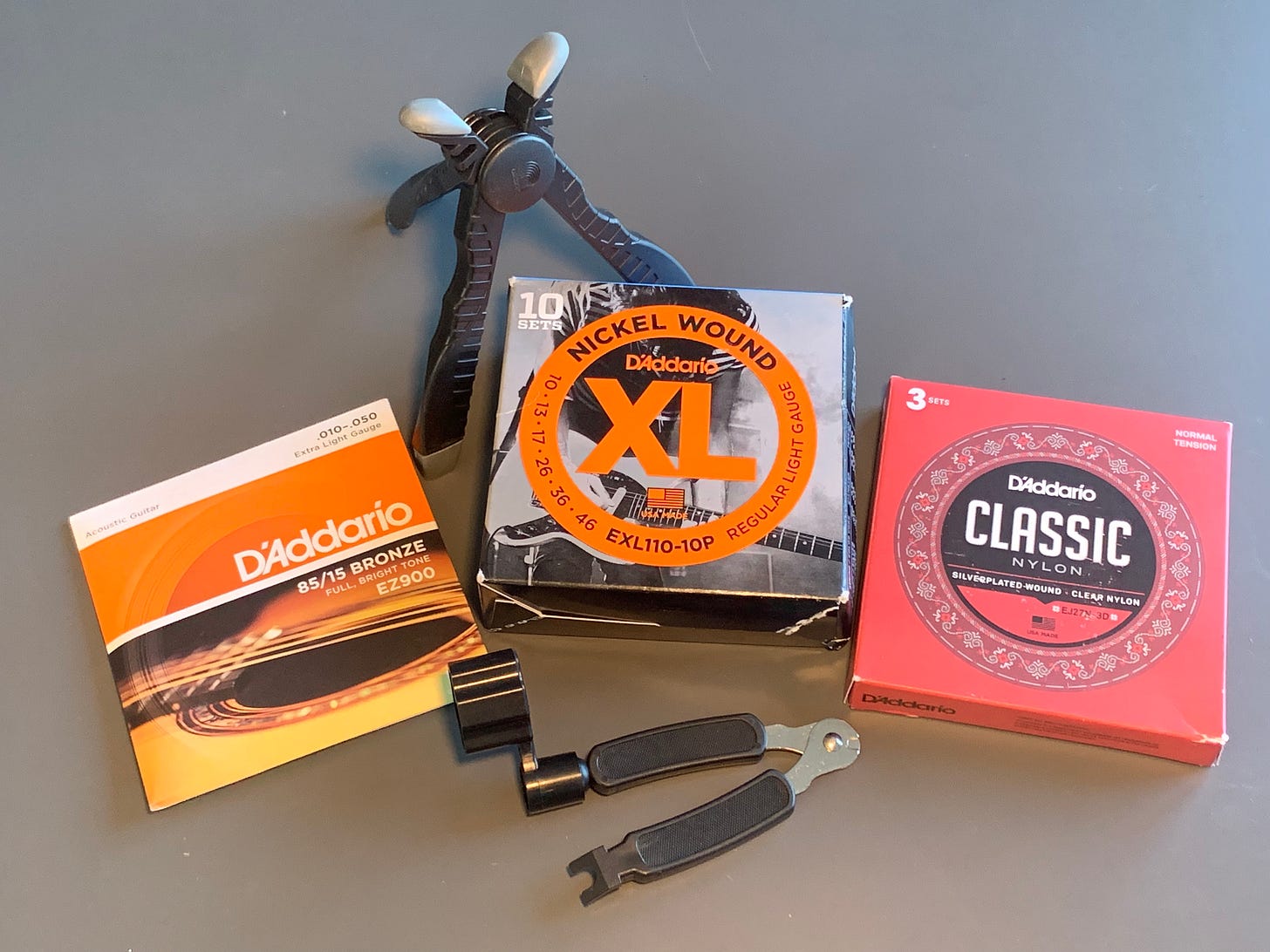
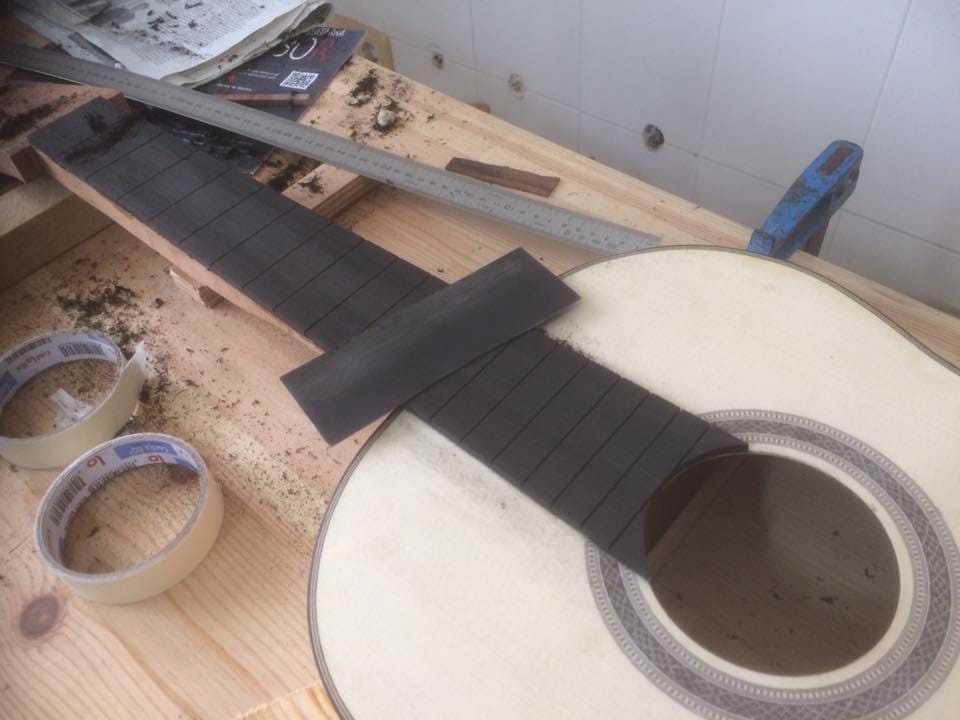
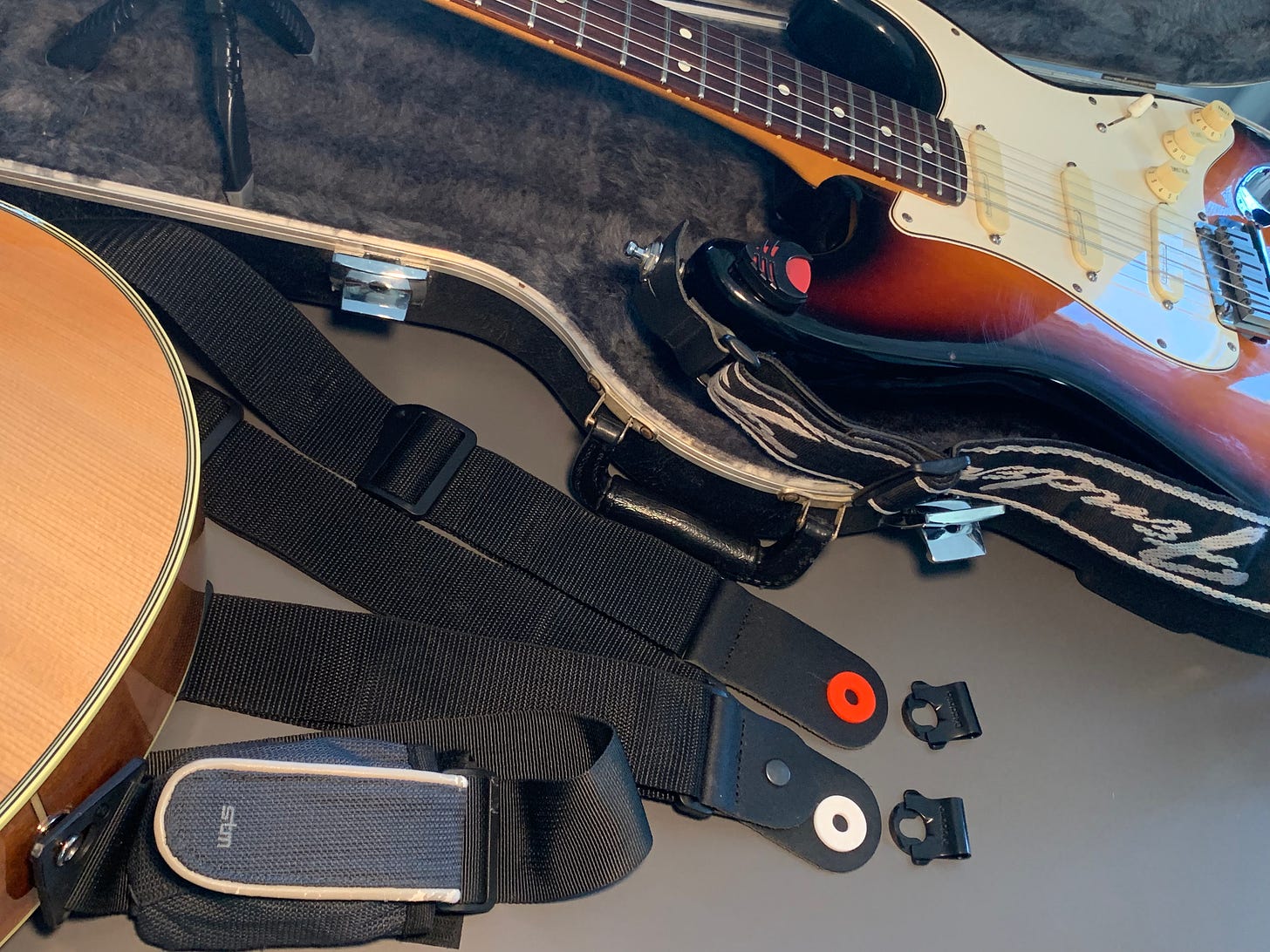
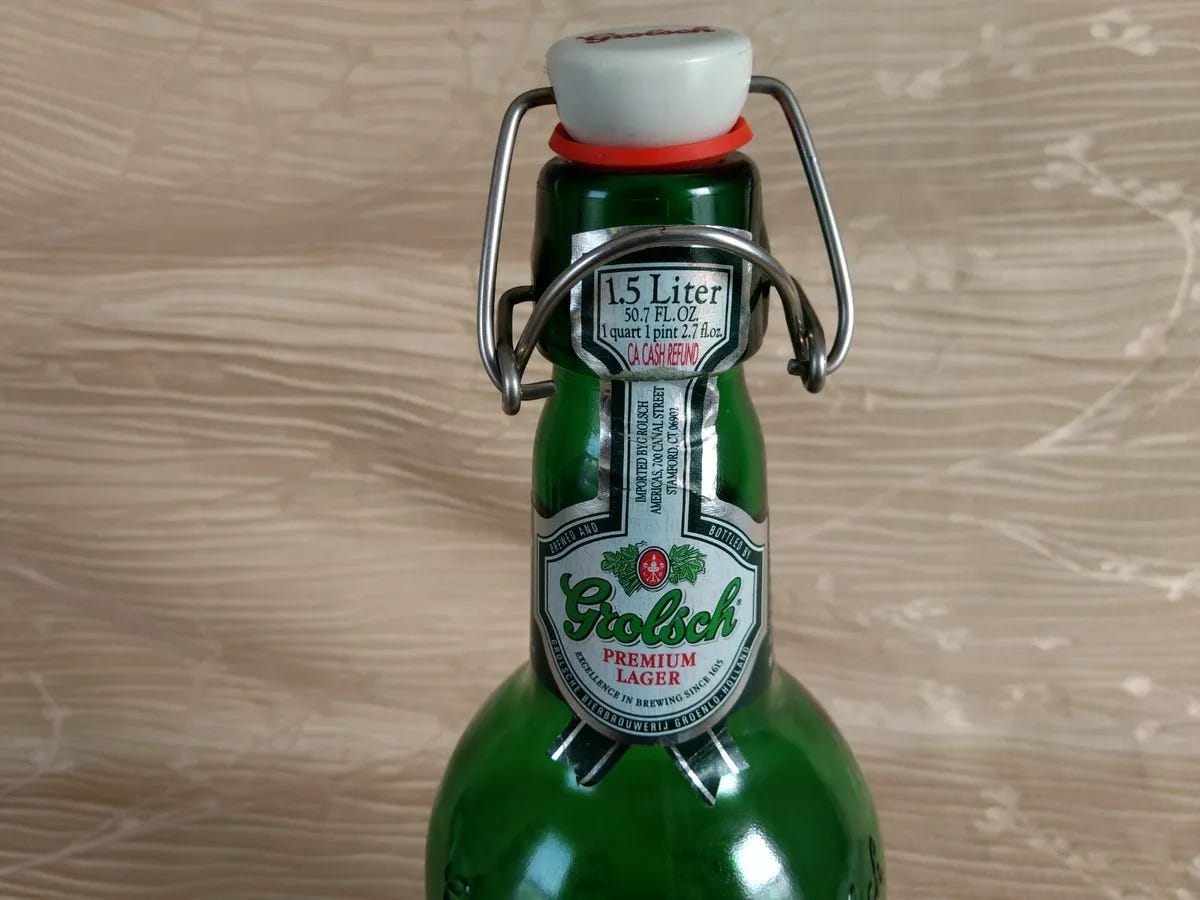
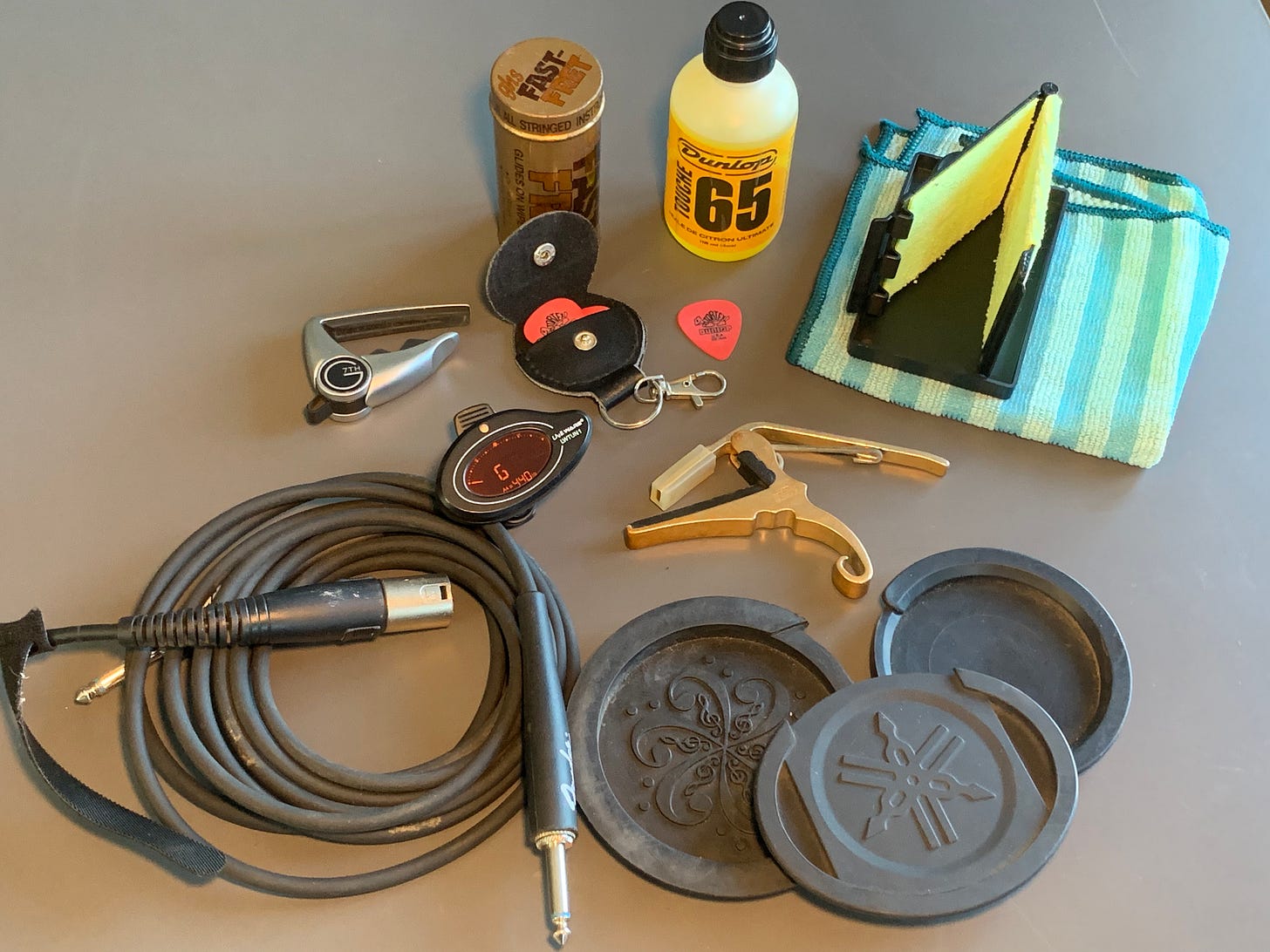
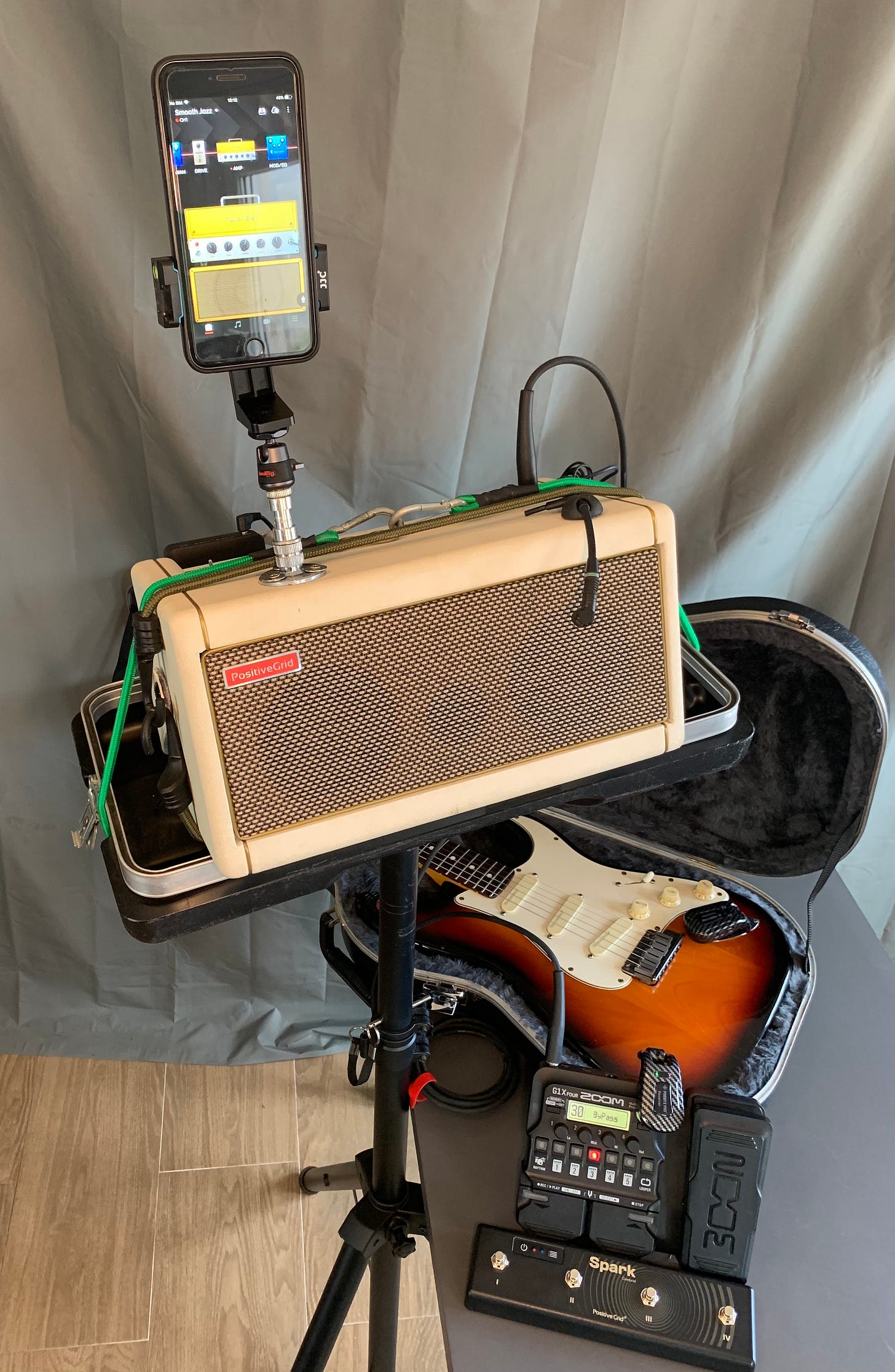
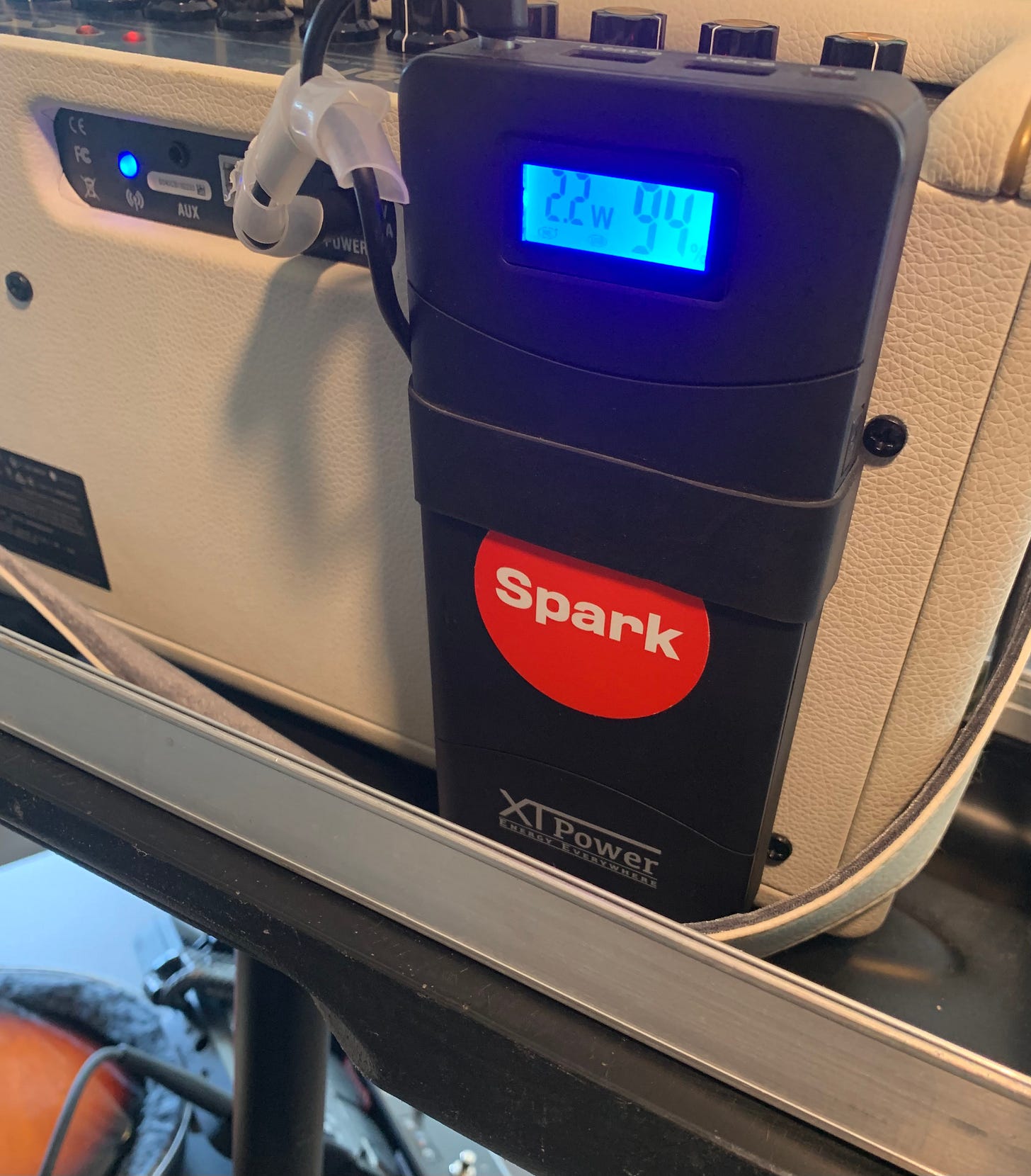
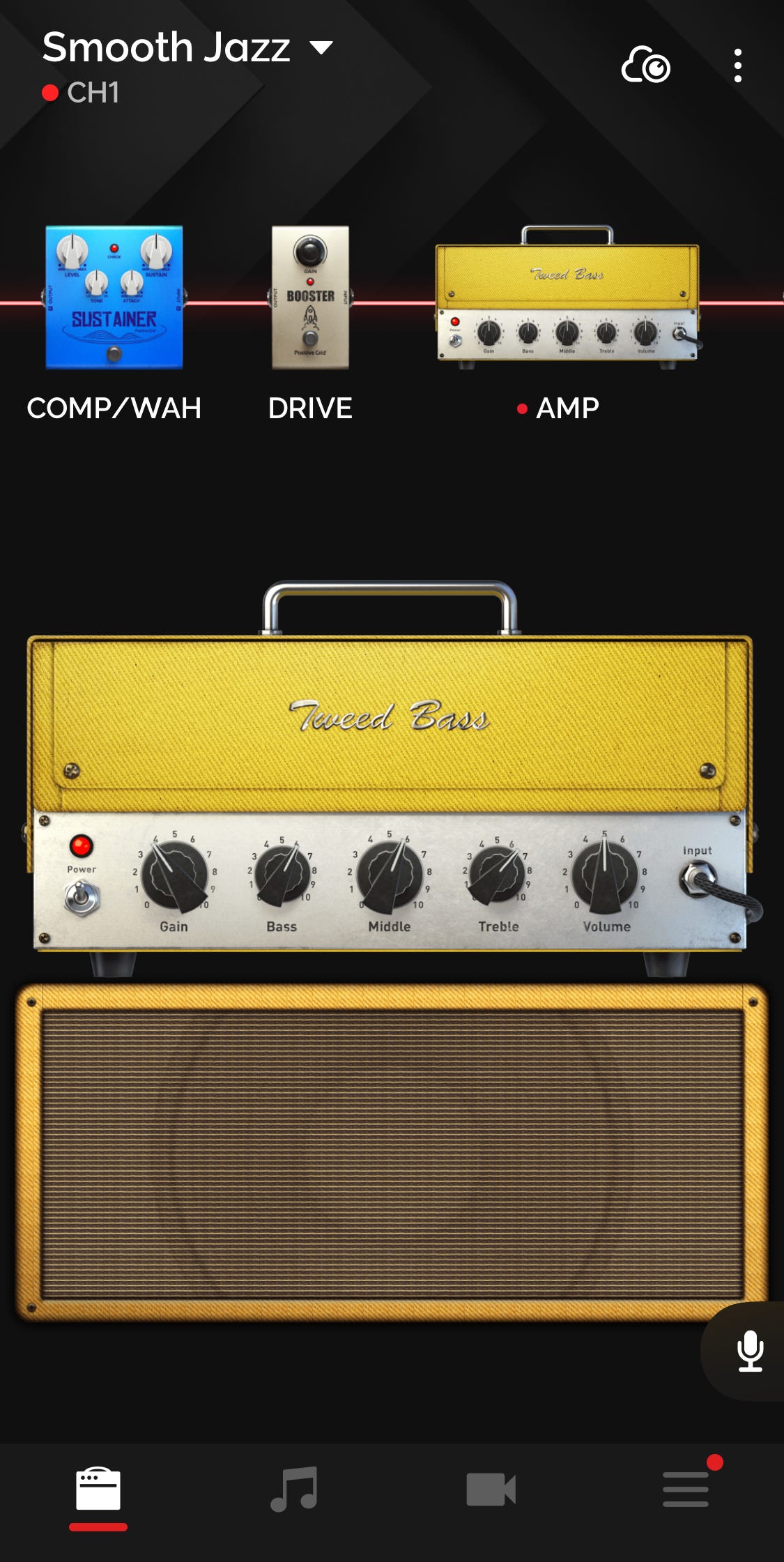
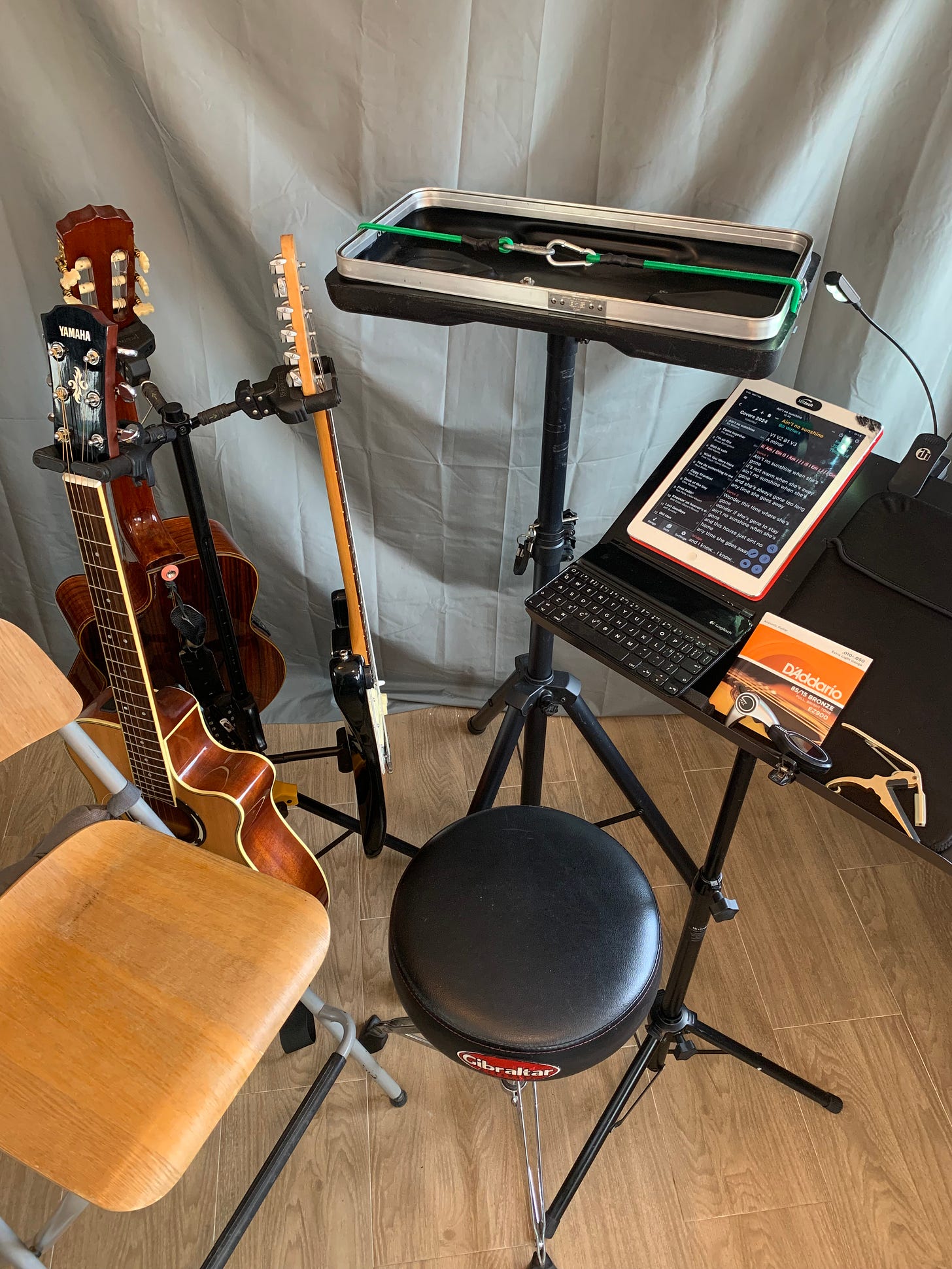
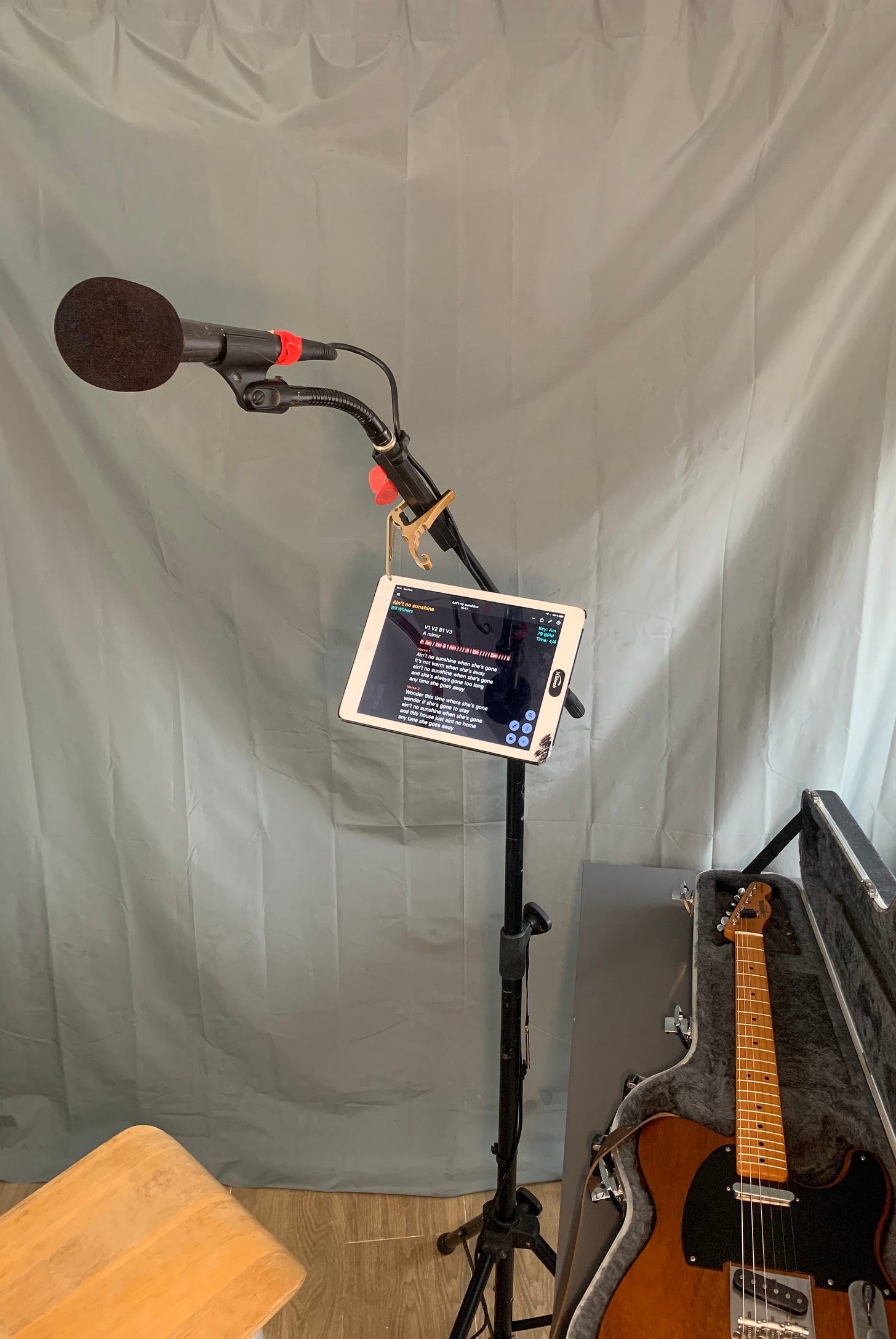
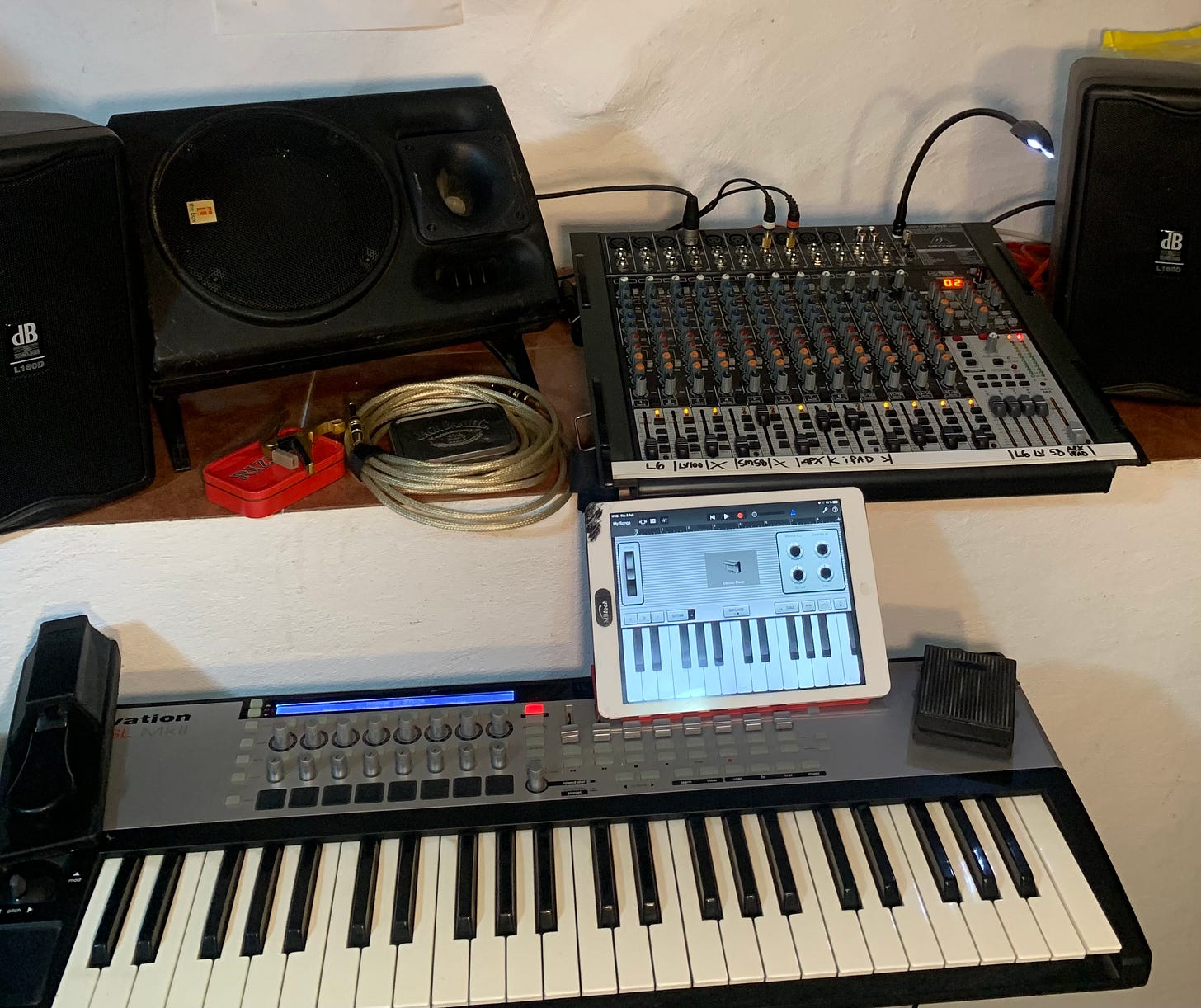
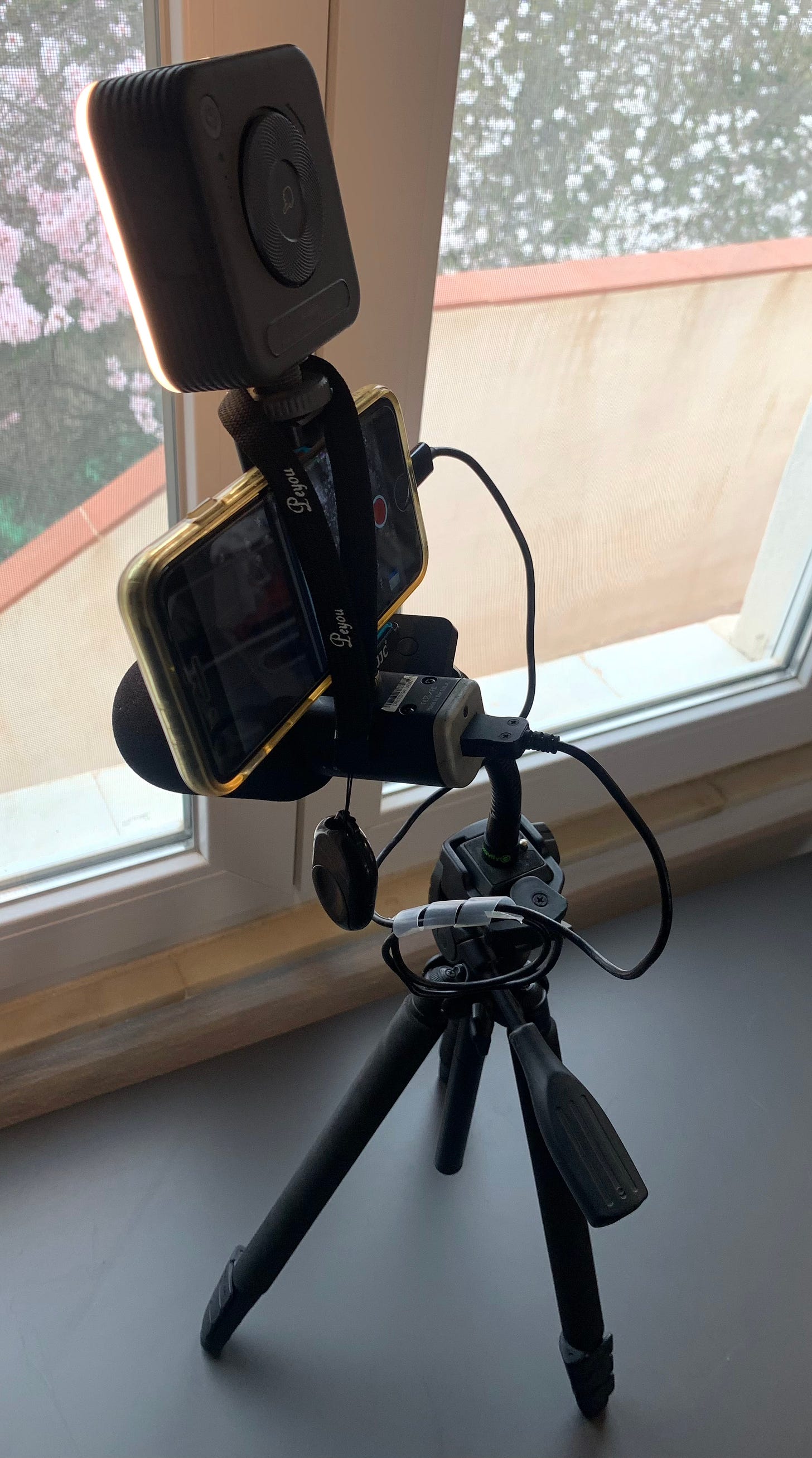
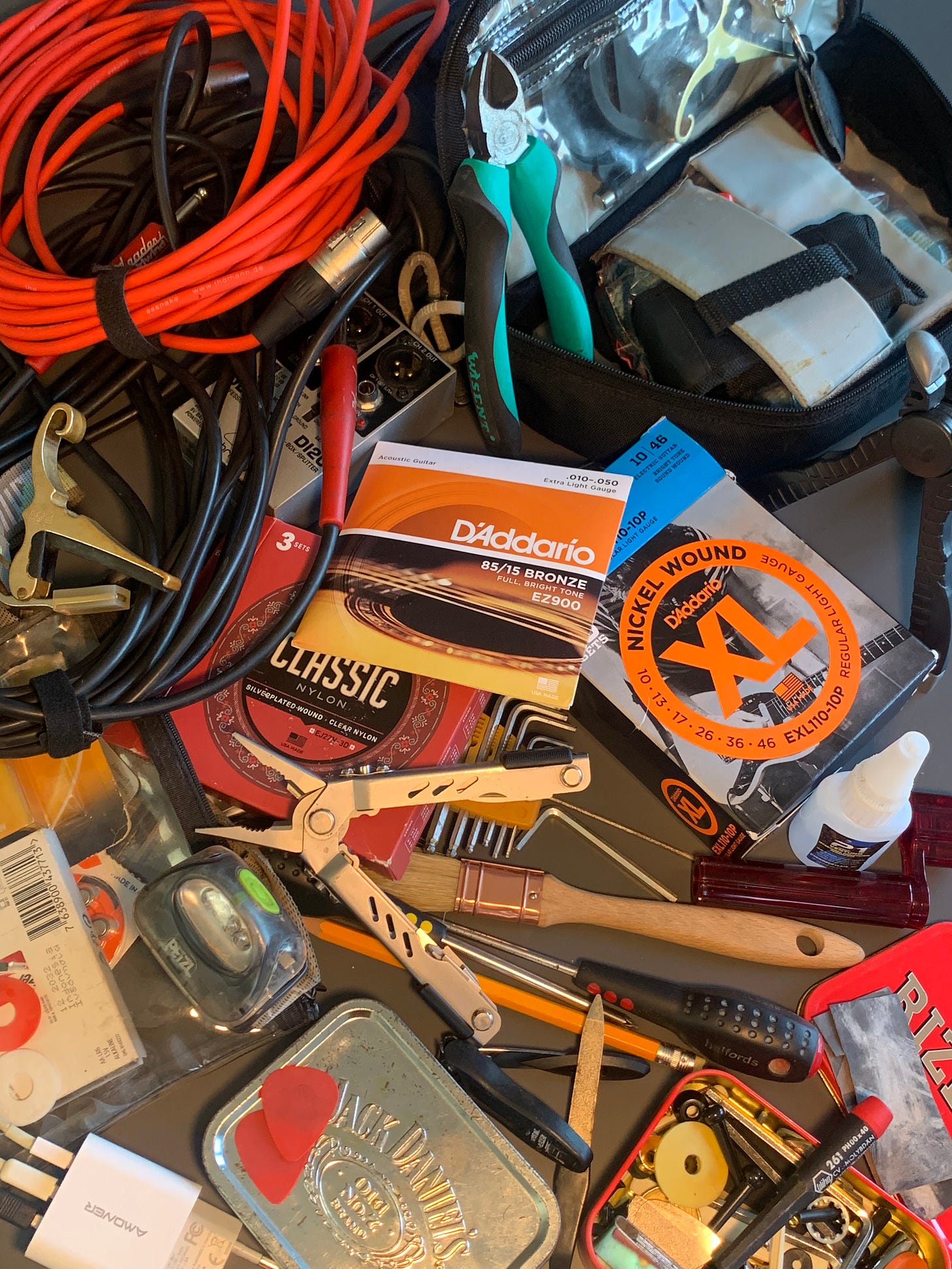
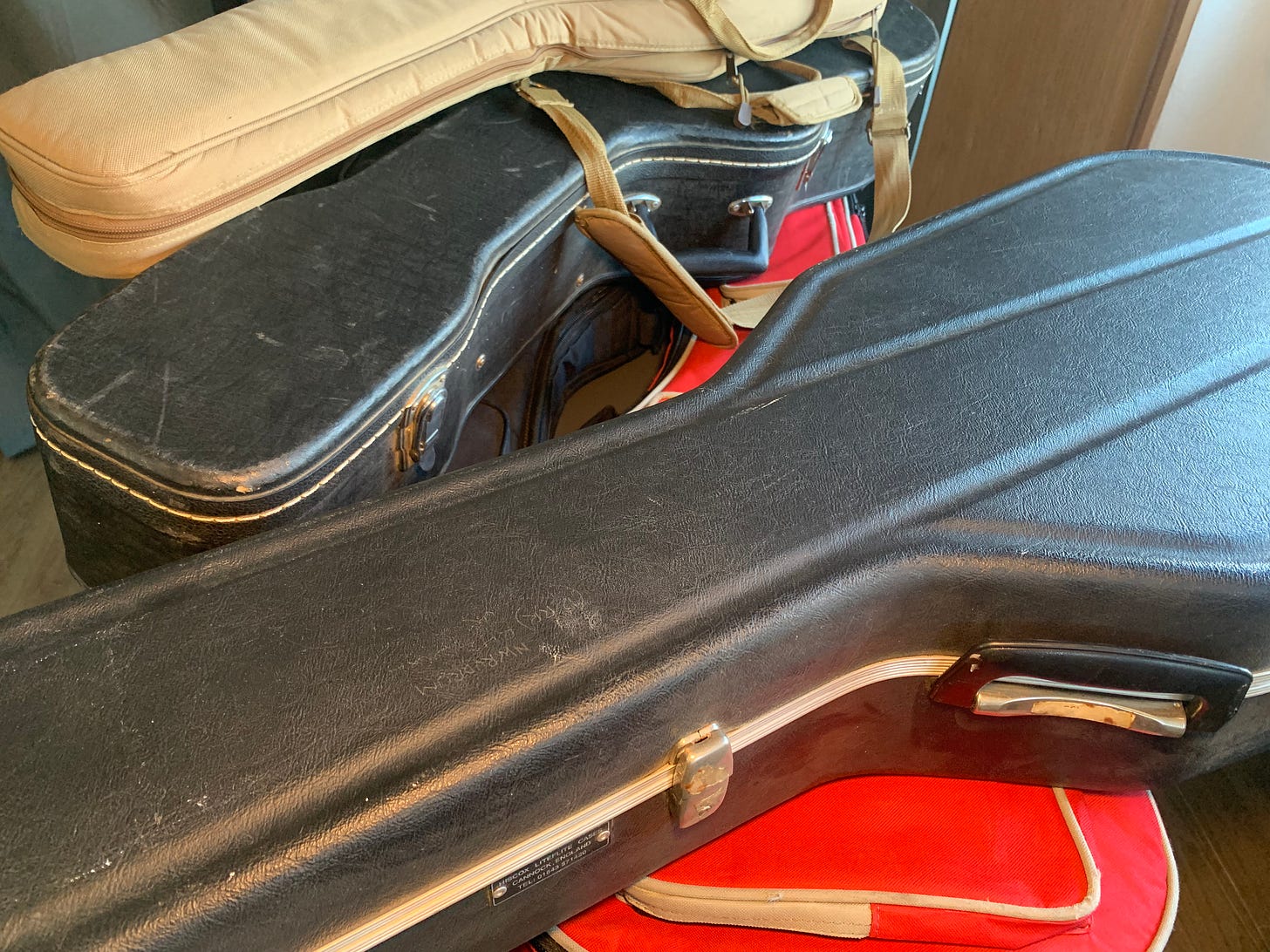

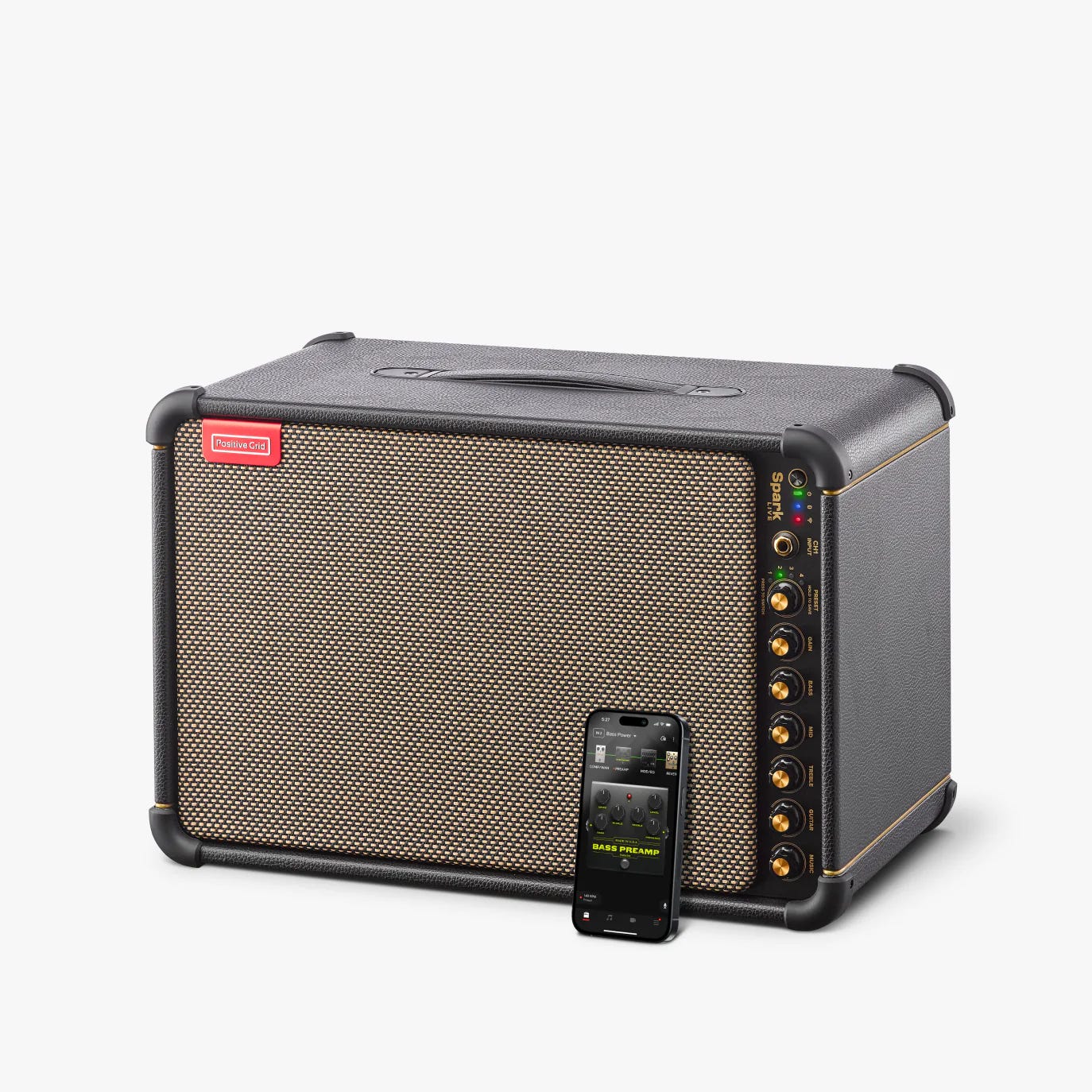


Excellent.